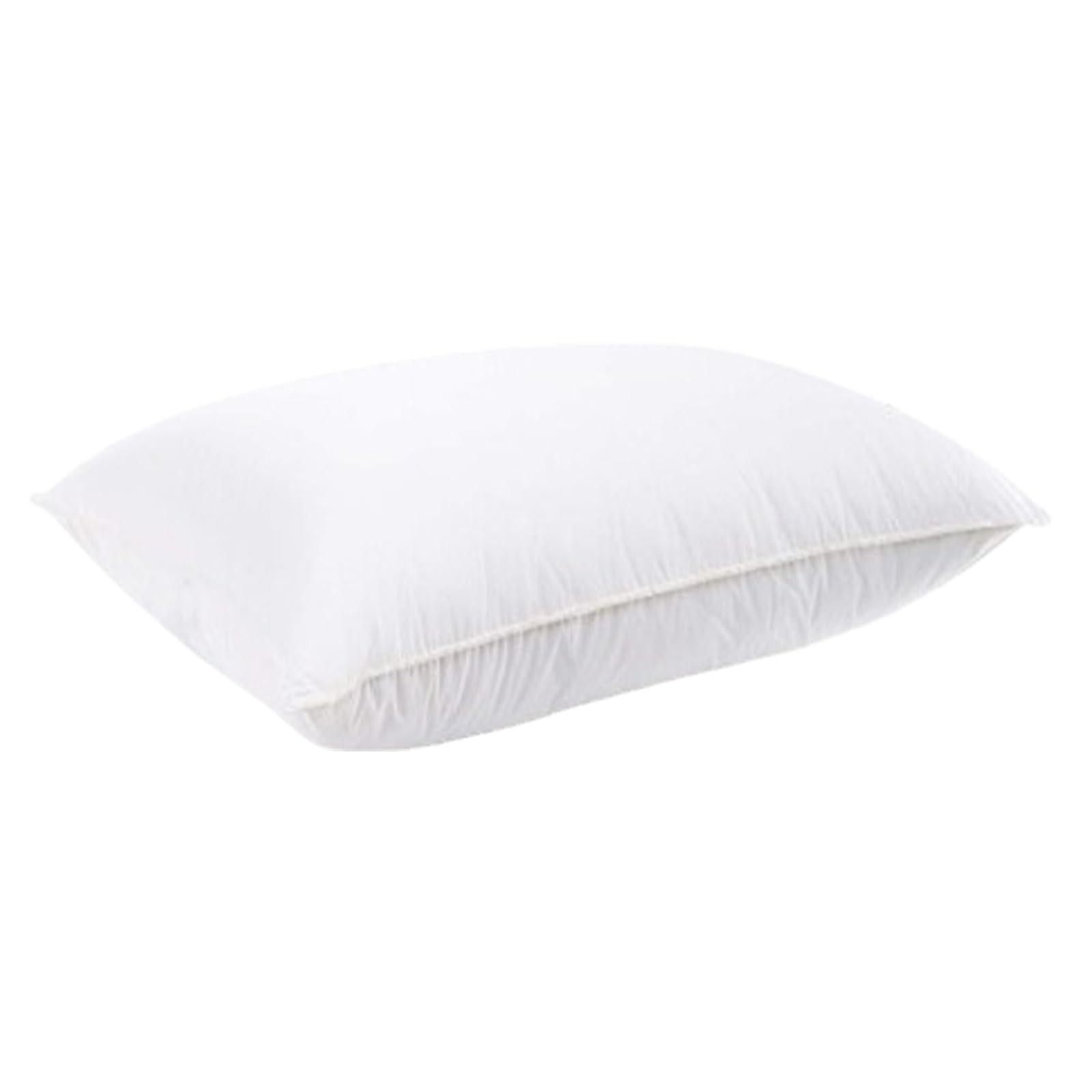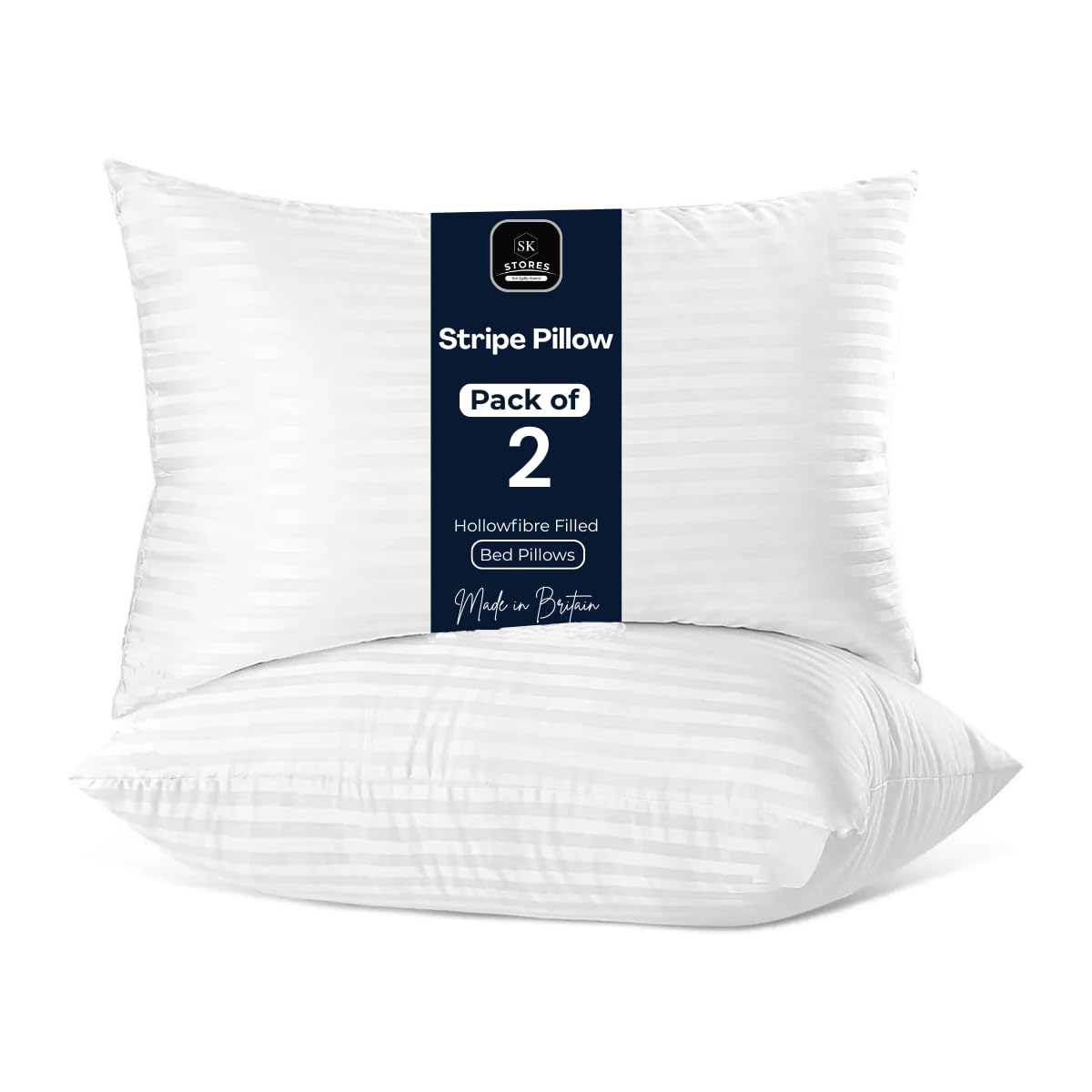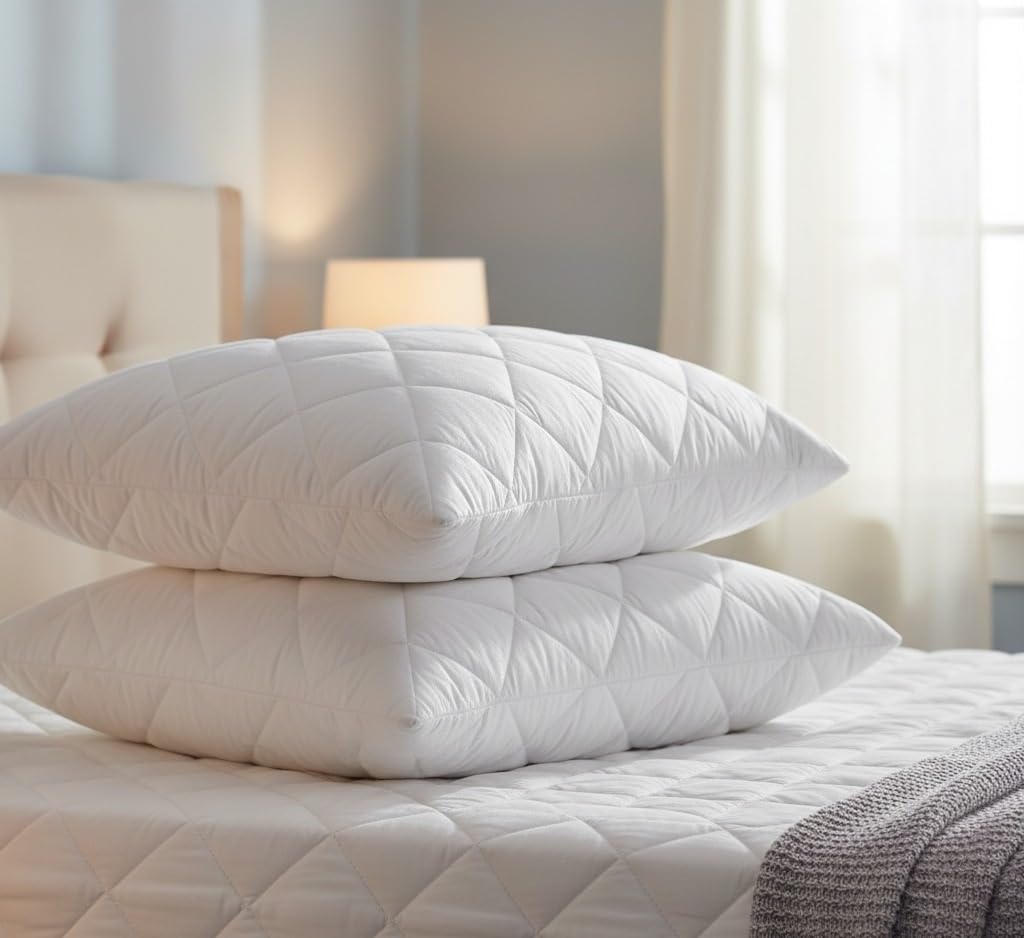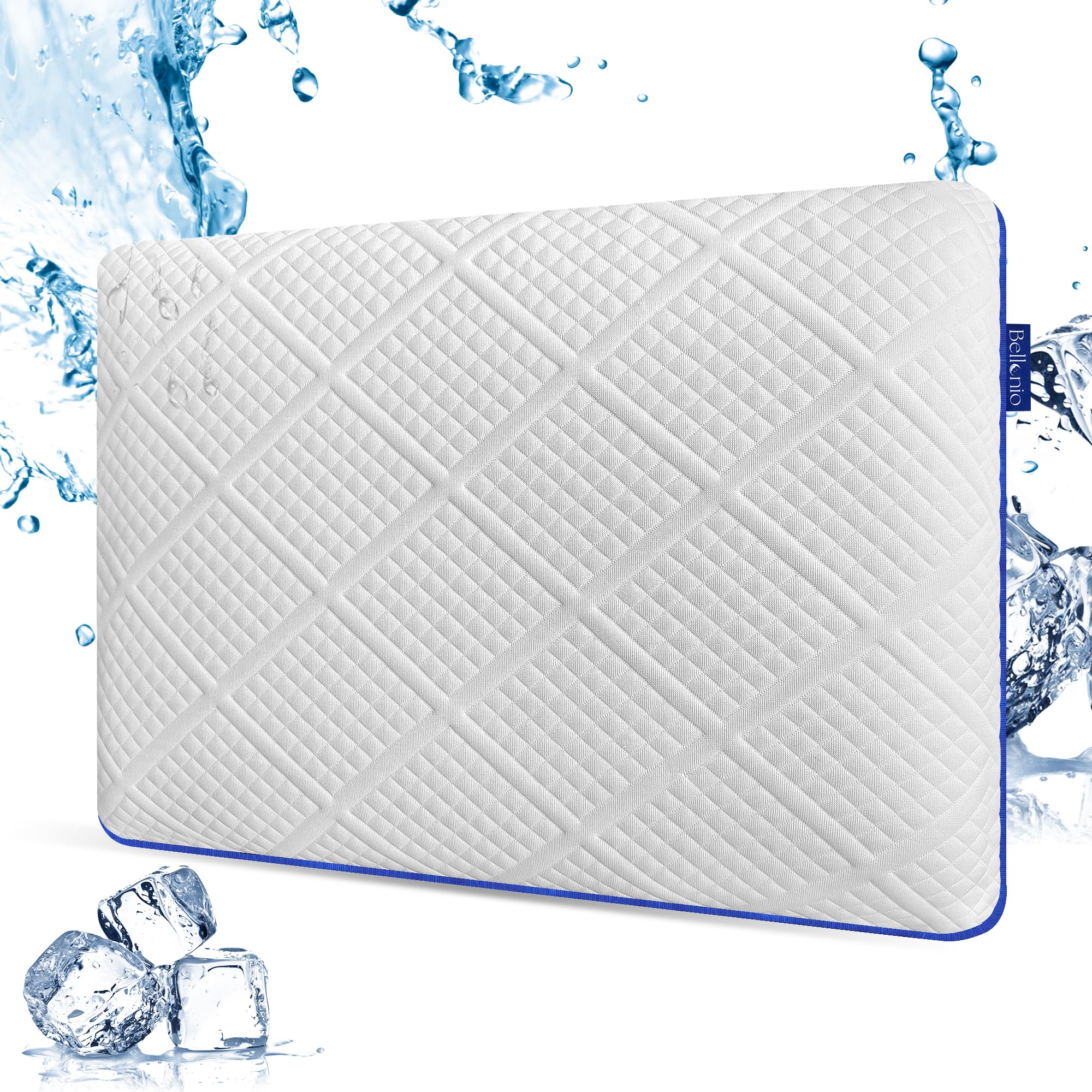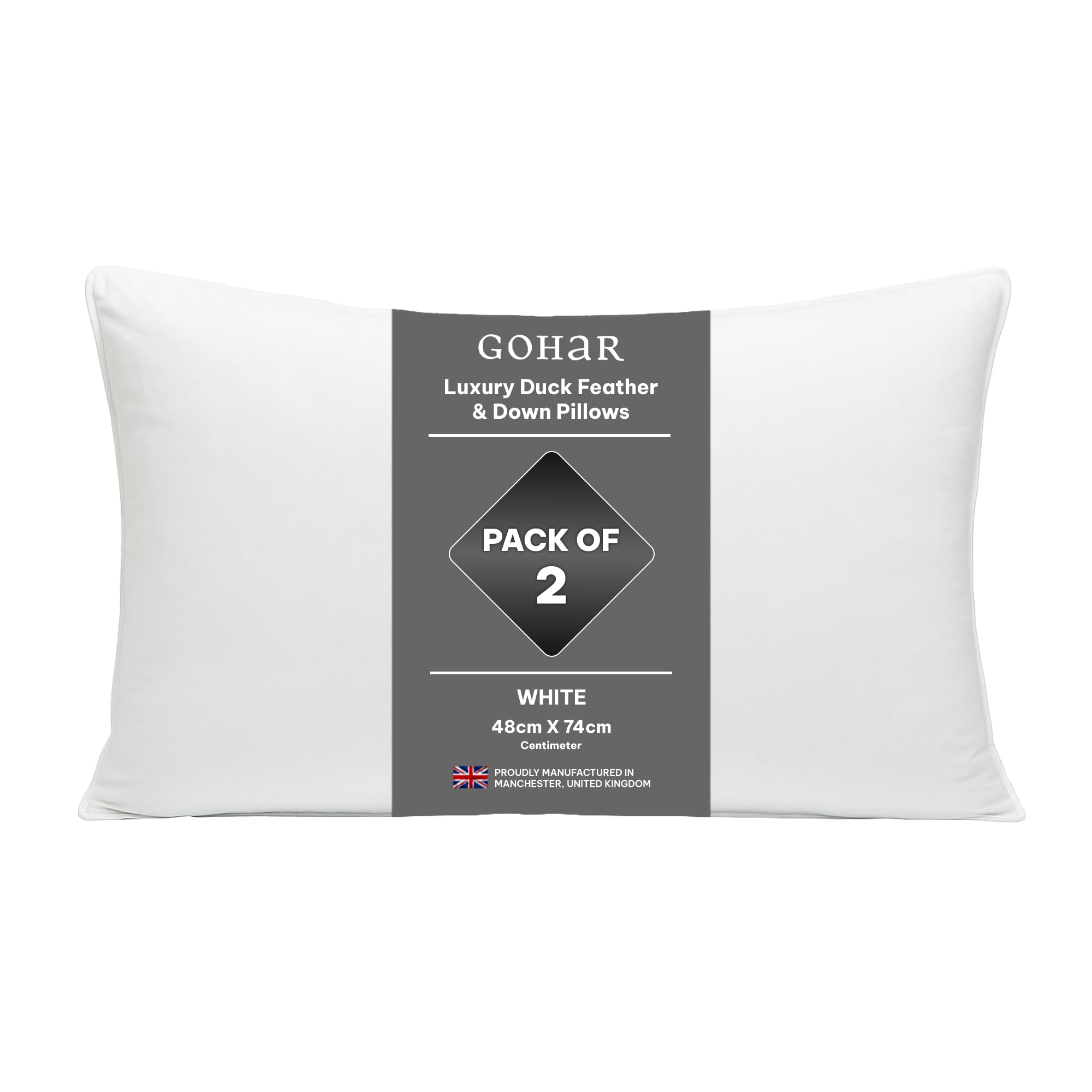The right pillow height keeps a side sleeper’s neck in a neutral line with the rest of the spine so muscles can relax and nerves do not get pinched. Too low, and your head tilts toward the mattress. Too high, and your neck bends upward. A small difference of one or two centimetres can determine whether you wake fresh or stiff. This guide shows a simple way to measure pillow loft at home, explains how mattress firmness affects the ideal height, and gives an easy plan to fine tune an adjustable pillow so you get a comfortable fit that lasts.
Neck comfort starts with pillows matched to sleep position and consistent loft.
Measure the Shoulder to Mattress Gap
Stand beside your made bed and look at the side where you sleep. Lie down on your usual side with your current pillow out of the way. Relax as you would when falling asleep, then ask a partner to measure the vertical gap from the tip of your shoulder to the top surface of the mattress where your head will rest. If you sleep alone, you can take a photo from behind and estimate the gap by counting centimetres against a ruler placed upright beside your shoulder. This gap is the starting loft your pillow needs to fill to keep your neck level. For many adults, that measurement falls between 10 and 12 centimetres, but your body shape and mattress will change it.
Factor in Mattress Firmness and Toppers
A firm mattress holds your shoulder higher, which increases the gap and pushes you toward a taller pillow. A soft mattress lets your shoulder sink deeper, which reduces the gap and calls for a lower pillow. If you have a memory foam or latex topper, the top few centimetres may compress as your head settles, which effectively lowers the needed pillow height. A quick way to account for this is to take your initial measurement, then subtract about one centimetre for a soft topper and half a centimetre for a medium topper. If your mattress is very firm, you may add half a centimetre to your starting number.
Choose a Pillow Type That Holds Its Height
Side sleepers need consistent support through the night. Solid memory foam and latex pillows hold their shape best and are reliable for people with neck discomfort. Contoured variants add a gentle ridge under the neck that some find helpful, especially when they roll to the back for part of the night. Adjustable pillows filled with shredded memory foam or shredded latex allow you to remove or add filling to match your measurement. They can be excellent for fine tuning, but they require a little setup time. Down and down alternative pillows feel plush and luxurious, though they compress more under the head. If you choose these fills, look for a firmer build and be ready to fluff the pillow daily.
Set Up an Adjustable Pillow in Four Steps
Empty a portion of the fill into a clean bag so you can put it back if needed. Place the pillow on the bed and press along the centre to spread the remaining fill into the corners. Lie down and check your neck alignment in a mirror or with a phone photo taken from behind. Your nose should point straight up, and the line from the back of your head to your back should look flat rather than angled. If your head tilts down, add a handful of fill. If it tilts up, remove a handful. Make changes in small amounts so you do not overshoot. Spend a full night with the new height before deciding whether to adjust again. Fine tuning over three or four nights will usually get you to a comfortable, stable loft.
Check Alignment After a Week
Materials settle in the first week. Shredded fills compress slightly and distribute more evenly. Memory foam softens a touch with warmth. Recheck your alignment after seven nights. If you wake with a stiff neck or notice your head sinking below level, add a little fill or consider moving to a pillow that holds height better, such as latex. If the pillow feels too tall after breaking in, remove a handful of fill. These small adjustments make a big difference and can turn a good pillow into a great one.
Temperature and Cover Choices
If you run warm, pick materials that breathe. Latex cores with ventilation holes and shredded fills allow air to move. Covers in cotton, bamboo or lyocell feel cooler than thick synthetics. If you use a waterproof mattress protector, a breathable design helps reduce heat build up around your head and neck. A cool pillowcase also helps, particularly cotton percale in warmer months. If you prefer a soft, smooth surface in winter, cotton sateen offers a slightly warmer feel without trapping too much heat.
When to Replace Your Pillow
Pillows lose height and support over time. If you fold your pillow in half and it stays folded, it has probably reached the end of its life. Foam and latex pillows typically last two to three years. Down and synthetic pillows may need replacing every one to two years, depending on use and quality. If you wake with tingling arms or shoulder pressure, your pillow height may be off or your mattress may be too firm. A small topper can soften the surface and reduce shoulder load while you keep your neck alignment with the right loft.
Practical Examples
A broad shouldered side sleeper on a firm hybrid mattress may measure a shoulder gap of 12 to 13 centimetres. A solid latex pillow around 12 centimetres high, or an adjustable shredded latex pillow set to that height, should keep the head level. A smaller framed person on a soft memory foam mattress might see a gap close to 9 to 10 centimetres. They would likely do best with a medium height memory foam pillow or a carefully adjusted shredded fill pillow. If you split your night between side and back, consider a contour pillow with a low centre and higher sides so the height works in both positions.
Adjustable designs that set accurate lofts feature in pillows for side sleepers; softer shoulder zones are common with a breathable topper.
FAQs
What is the best pillow height for most side sleepers? Many people land between 10 and 12 centimetres once mattress firmness is considered, but measure your own shoulder gap for accuracy.
Are adjustable pillows worth the effort? Yes. Ten minutes of setup can solve the fit issues that cause neck pain, and you can tweak height later if you change mattresses.
Is a contour pillow better than a flat one? For some people it is. The raised ridge under the neck can support the curve well, especially if you also sleep on your back part of the time. Others prefer a flat surface. Comfort and alignment are the goals.
